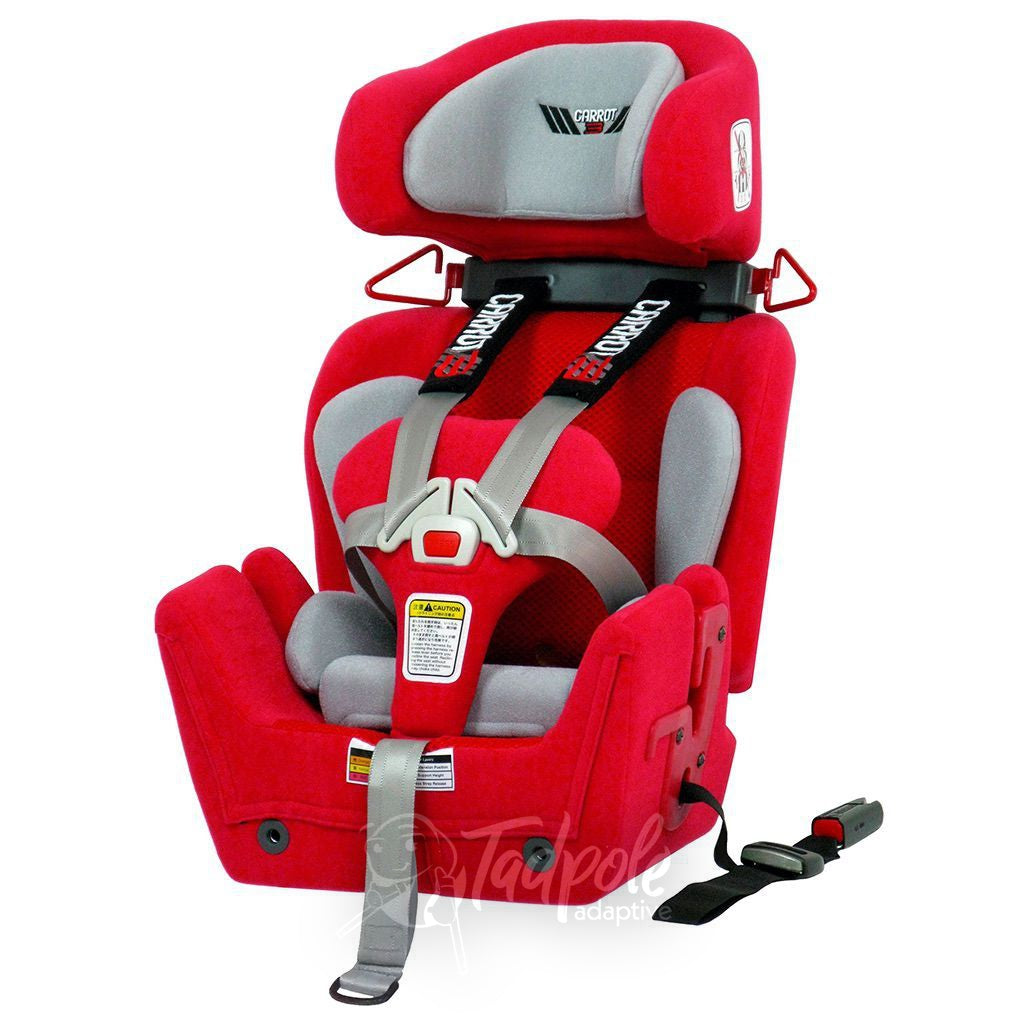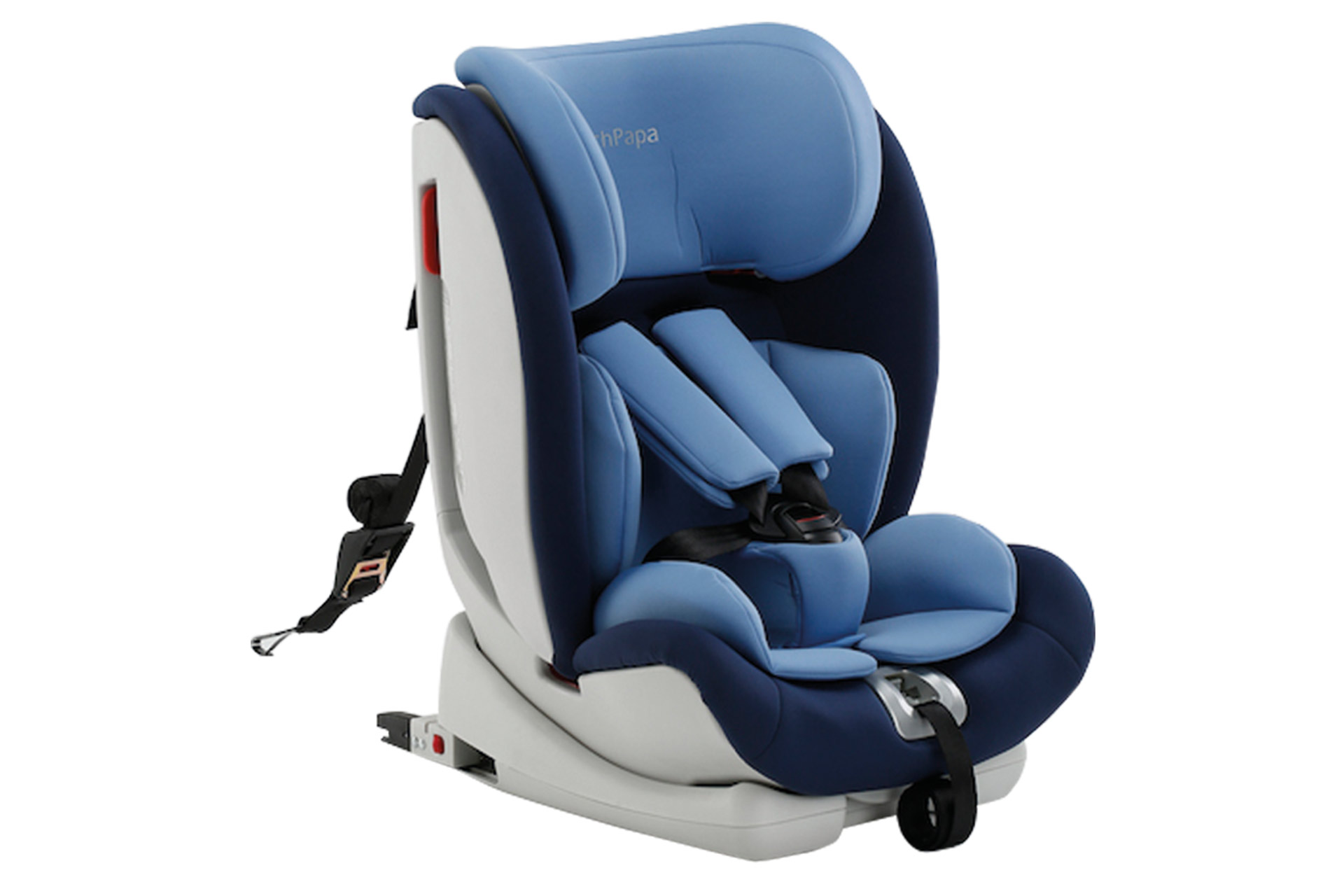
The limit on head excursion reduces the likelihood of a child head's striking harmful objects or surfaces in a crash. Head excursion refers to the distance the test dummy's head moves forward during the dynamic test (S5.1.3.1(a)(1)). Start Printed 15One of the dynamic performance requirements for forward-facing CRSs tested in the untethered condition is an 813 mm (32 inch) limit on head excursion. Under S6.1.2(a)(1)(B), NHTSA may test a CRS without a top tether attached. S6.1 specifies the conditions and procedures for the dynamic sled test. NHTSA dynamically tests CRSs with anthropomorphic test devices (test dummies) of sizes representing the children for whom the CRS is designed. Among other tests is a dynamic frontal sled test involving a 48-kilometer per hour (km/h) (30-mile per hour (mph)) velocity change. S5(b) requires each child restraint system to meet the requirements of the standard when tested in accordance with S6.1 and S5. 213, “child restraint systems” are devices, except vehicle lap or lap/shoulder belts, designed for use in a motor vehicle to restrain, seat, or position children weighing 36 kilograms (80 pounds) or less. 213 specifies performance and other requirements for child restraint systems to reduce the number of children killed or injured in motor vehicle crashes. Denial of Request To Consider Hybrid CRSs as Harnesses I. The Requested Amendment's Possible Adverse Effect on Child Occupant ProtectionĮ. NHTSA Denies the Request To Remove the Untethered Test for Hybrid CRSsĬ. NHTSA Denies the Request To Remove the Untethered Test Completelyī. End Further Info End Preamble Start Supplemental Information SUPPLEMENTARY INFORMATION: Table of ContentsĪ. For legal issues, you may contact Deirdre Fujita, Office of the Chief Counsel, National Highway Traffic Safety Administration, 1200 New Jersey Avenue SE, Washington, DC 20590. Start Further Info FOR FURTHER INFORMATION CONTACT:įor non-legal issues, you may contact Cristina Echemendia, Office of Crashworthiness Standards, National Highway Traffic Safety Administration, 1200 New Jersey Avenue SE, Washington, DC 20590. NHTSA is denying the petition because the requested amendments would unreasonably reduce the child occupant protection provided by FMVSS No. 213 be amended to include its hybrid CRS. 213, “Child restraint systems,” to remove a requirement that child restraint systems (CRSs) must meet performance requirements without use of a top tether, or exclude from that requirement a new kind of CRS that the petitioner would like to develop called a “hybrid CRS.” Alternatively, the petitioner requests that the definition of a “harness” in FMVSS No. This document denies a petition for rulemaking from Jewkes Biomechanics (Jewkes) requesting that NHTSA amend Federal Motor Vehicle Safety Standard (FMVSS) No. ACTION:ĭenial of petition for rulemaking. National Highway Traffic Safety Administration (NHTSA), Department of Transportation. Provide legal notice to the public or judicial notice to the courts. Rendition of the daily Federal Register on does not Until the ACFR grants it official status, the XML

Legal research should verify their results against an official edition of

#Child restraint systems pdf
The official SGML-based PDF version on, those relying on it for The material on is accurately displayed, consistent with

While every effort has been made to ensure that

Regulatory information on with the objective ofĮstablishing the XML-based Federal Register as an ACFR-sanctioned The OFR/GPO partnership is committed to presenting accurate and reliable Register (ACFR) issues a regulation granting it official legal status.įor complete information about, and access to, our official publications Informational resource until the Administrative Committee of the Federal This prototype edition of theĭaily Federal Register on will remain an unofficial Each document posted on the site includes a link to theĬorresponding official PDF file on. The documents posted on this site are XML renditions of published Federal Register, and does not replace the official print version or the official It is not an official legal edition of the Federal This site displays a prototype of a “Web 2.0” version of the dailyįederal Register.


 0 kommentar(er)
0 kommentar(er)
